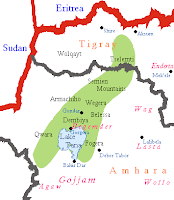The Old English Herbarium, translated from Latin in the 11th century, includes in two places the same advice: "For a woman's menses, take the confirma [comfrey] plant, pound it into fine powder, and give it to drink in wine. The flow will quickly stop." This suggestion to stop the flow would not work, of course.
From the same source comes this suggestion:
“For a woman's menses, take the same plant [called urtica or nettle], pounded thoroughly in a mortar so that it is very soft. Add to it a little honey, take some moist wool that has been teased, and then use it to smear the genitals with the medication. Then give it to the woman, so that she can lay it under her. That same day, it will stop the bleeding.”
Exposure to nettles causes very uncomfortable itching, which makes application of this to the body an odd choice.
Physical means to stop the flow were as they are today, just not available at the grocery store. Cloth was the obvious solution. "Roman women used wool tampons. Women in ancient Japan fashioned tampons out of paper, held them in place with a bandage, and changed them 10 to 12 times a day." [source] In England, there is evidence that sphagnum moss was used because of its absorbent property; it is also called "blood moss" for this reason, and/or because it was used as a battlefield dressing for wounds.
The illustration shows a woman with her genitals exposed, apparently demonstrating how cloth can be folded into a cone-shape to be used to stop the flow.
The other issue is the aching that takes place during menses. The Herbarium had a suggestion for this, as well: “This plant, which is called thyaspis takes away all painful congestion in the abdomen and it also stimulates a woman's menses.” Thyapsis was also known as Shepherd's Purse.
The lack of discussion in medical texts about this topic likely stems from the fact that most medical treatises were written by men who considered the subject taboo, or were simply not interested in it. There were, however, women (and men) who did write on the subject of female health, and we'll look at some starting tomorrow.










.jpg)












.jpg)




